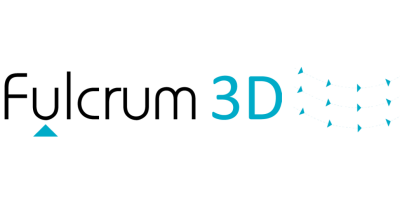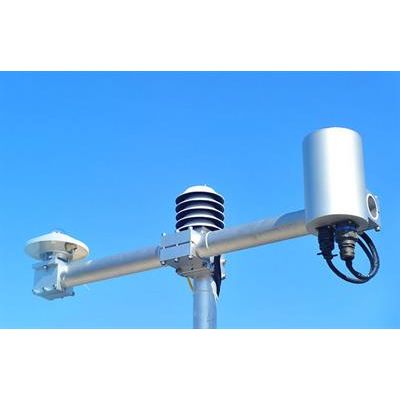

- Home
- Companies
- Fulcrum3D P/L
- Products
- Fulcrum3D CloudCAM - Cloud Monitoring ...

Fulcrum3D CloudCAM - Cloud Monitoring and Forecasting System
CloudCAM detects clouds, predicts cloud movement and provides cloud and solar irradiance forecasts 15 and more minutes in advance. Clouds have a substantial impact on the sunlight reaching the earth and changes in cloud shading can be very rapid. Predicting such changes can be vitally important for solar power generators. This affects many industries ranging from agriculture to solar power production to naturally lit facilities such as buildings and sports arenas.
CloudCAM detects nearby clouds, measures cloud cover, locates clouds and cloud shadows and predicts their future location. It is designed for the solar energy industry where rapid and significant changes in solar power output result from cloud events, and CloudCAM can be used to ensure effective integration of solar to the grid
The flexible CloudCAM system can be customised to meet the end users’ requirements.
The Fulcrum3D CloudCAM delivers:
- Prediction from seconds to more than 15 minutes in advance, allowing the control of local power plant to be optimized for the variable solar conditions;
- FlightDECK support allows easy on-line data access and equipment management;
- Customisable features – sampling rates, alarm thresholds, areas of interest, and plant parameters;
- Equipped with remote communications which transfers data to the Fulcrum3D servers via the cellular network;
- Longer-term forecasts can be made available from satellite or meteorological data, which do not have the resolution available to make near-term forecasts. The two forecasts formats can also be nested, with satellite-based analysis for longer predictions and CloudCAM forecasts for near-term forecasts;
- Automated cloud cover measurement reduces cost for meteorological organisations and researchers.
CloudCAM product options enable you to get the most from your system. For example, to provide short term irradiance forecasting, power generation forecasting or to collect additional environmental data
Provides real-time cloud detection and cloud cover measurements and includes:
- Weatherproof all-sky camera system;
- Fixed fish-eye lens provides 360/180 degree sky coverage;
- Kipp&Zonen SMP11 pyranometer (irradiance);
- Vaisala HMP60 (temperature, humidity) sensors;
- Solar power supply, remote communications and mounting kit;
- Measure various environments at one time – measure the complete set of environmental parameters within one system, allowing correlation analysis to be carried out between the various environmental parameters;
- Integration with local SCADA via modbus or access data remotely via FlightDECK.
CloudCAM delivers dependable data
CloudCAM systems have been in continuous use since 2012 in harsh environments in the Australian outback. These systems have proven reliability. Further long-term deployments include:
- Urban environment – Sydney, Australia;
- Arid and tropical environments – northern Australia, Kiribati.
By integrating CloudCAM with Fulcrum3D’s solar monitoring system, the complete set of environmental parameters is measured within one system, allowing correlation analysis to be carried out between the various environmental parameters. For example, risk analysis can be carried out by comparing cloud measurements with actual solar radiation measurements.
Information is available 24/7 via your web browser. FlightDECK enables data to be downloaded as well as information about your CloudCAM system and location including mapping and deployment history etc to be viewed. Access is included in your annual data access fee.
View real time met dataCloudCAM is equipped with remote communications to transfers data to the Fulcrum3D servers via the cellular network. This is preconfigured when the unit is supplied. When on site installing the unit, FlightDECK Onboard can be used to view real time data, check mobile/cell reception strength, current logger time etc. with a laptop.
- Optimise market bid strategies based on short term solar power output forecasts
- Provide essential power output forecasts to network operators
- Measure and predict cloud shading and solar power output across the entire solar farm
- Allow higher penetration solar without disrupting existing generators, increasing fuel savings
- Implement ramp rate control on PV inverters to reduce rate of change in output to acceptable levels
- Implement optimised set point control to cap solar power output to levels acceptable for diesel power stations
- Optimise charge / discharge of batteries based on solar power forecasts to minimise unnecessary energy spill
- Implement ramp rate control on PV inverters to reduce unnecessary cycling of energy storage
- Reduce the energy storage capacity required to maintain acceptable operations for the same solar power penetration
- Reduce system losses, improve battery lifetime and reduce overall costs
- Accurately forecast short term solar power output from centralised or decentralised solar power stations
- Allow optimum network control and generator scheduling
- Automatic cloud cover measurement at a point or over a broad area (% cover, oktas)
- Cloud cover settings and event flags for use in automated control systems
- For meteorological authorities, agricultural users, building designers and researchers
- Uses include meteorology, greenhouses, irrigation systems, telescope operators, building control systems
- Manage artificial lighting at sports venues based on cloud shading predictions
- Analyse optimal event times based on cloud shadow events
